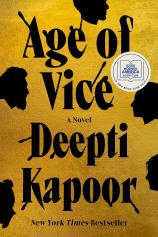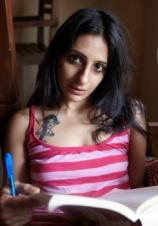Reading Group Guide
Discussion Questions
Age of Vice

1. An epic, action-packed, multicharacter drama, AGE OF VICE has been described as a family saga, a crime thriller and even a twisted, forbidden romance. Its characters include crime bosses and servants, politicians and journalists, friends and lovers, and dysfunctional families; the plot offers violence and betrayal, as well as tenderness, heartache and hope. How would you characterize it as a novel? If you were recommending it to a friend, what would you compare it to?
2. At the center of the novel is the astonishingly wealthy, dangerously corrupt Wadia family, whose elaborate web lures and entraps multiple characters. Theirs is a world where money buys pleasure, power and loyalty --- but what that loyalty is expected to look like differs depending on the person. Consider some of the different ways that loyalties are tested and proven, and how the outcomes vary. (Compare, for instance, the post-crash outcomes for each of the characters involved.)
3. Consider the novel’s three main characters: Ajay, a servant born into poverty; Neda, an upper-caste, educated woman; and Sunny, the playboy son of a crime family. How do their worlds, rules and expectations differ and intersect? What do these characters illustrate about the different social realms of India? How are they each changed when their fates become intertwined? Which world were you most interested in and why?
4. Over the course of the novel, we follow Ajay through his formative years and witness his transformation from poor, young servant boy to a “Wadia man.” What does it mean to be a Wadia man? Did his transformation surprise you? What does Ajay gain through this process , and what does he lose? What can you conclude about the possibility or impossibility of changing one’s destiny?
5. Neda is a fledgling investigative journalist, torn between the allures of luxury and her increasing awareness of the social injustice around her. From where does Neda derive her values? How do they change? How are her assumptions and expectations different from Sunny’s?
6. As the son of the undeniably successful (if also plainly corrupt) Bunty Wadia, Sunny is a pleasure-seeking socialite who is accustomed to getting what he wants, yet struggles with his conflicting desire to simultaneously impress his father and step out from within his shadow. How does his relationship with Neda complicate those desires?
7. From the dusty villages of Uttar Pradesh to the mountains of the Himalayas, the beaches of Goa and the bustle of New Delhi, readers are offered a broad window on the culture and landscape of contemporary India. What surprised you about the portrayal of these microcosms, or about the relationship between urban and rural life? What role does the change of setting play in the characters’ story arcs?
8. By playing with point of view and jumps in time, Kapoor changes our understanding of the characters she has introduced us to. What is achieved by beginning the novel with Ajay’s car accident as opposed to his origin story? Why start the novel with Ajay and not Neda or Sunny? How did your initial views change over the course of the book?
9. Further complicating the power dynamics at play in the novel is the notion of the Indian caste system, in which status is endowed by birth. Consider the scene in which we first meet Ajay (“not a rich man at all, rather a facsimile, a man dressed in the imitation of wealth”), compared to our introduction to Sunny (“young, rich, and glamorous...for whom authenticity is not a question”). What role do birth/caste, inheritance and social capital play in determining one’s “wealth” in the novel? Is there an American equivalent to all of this?







